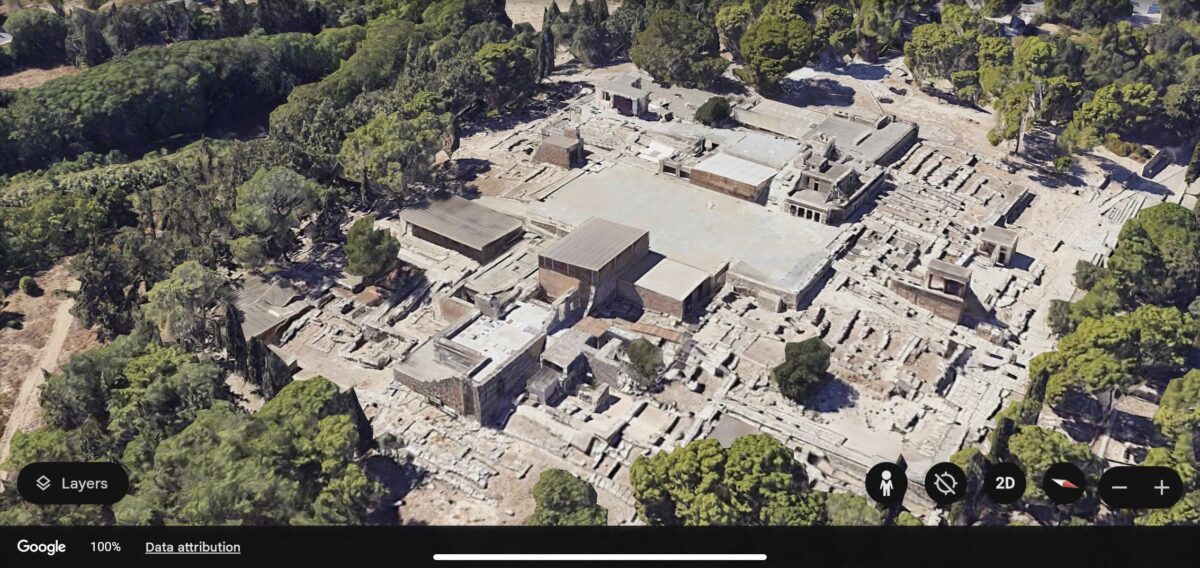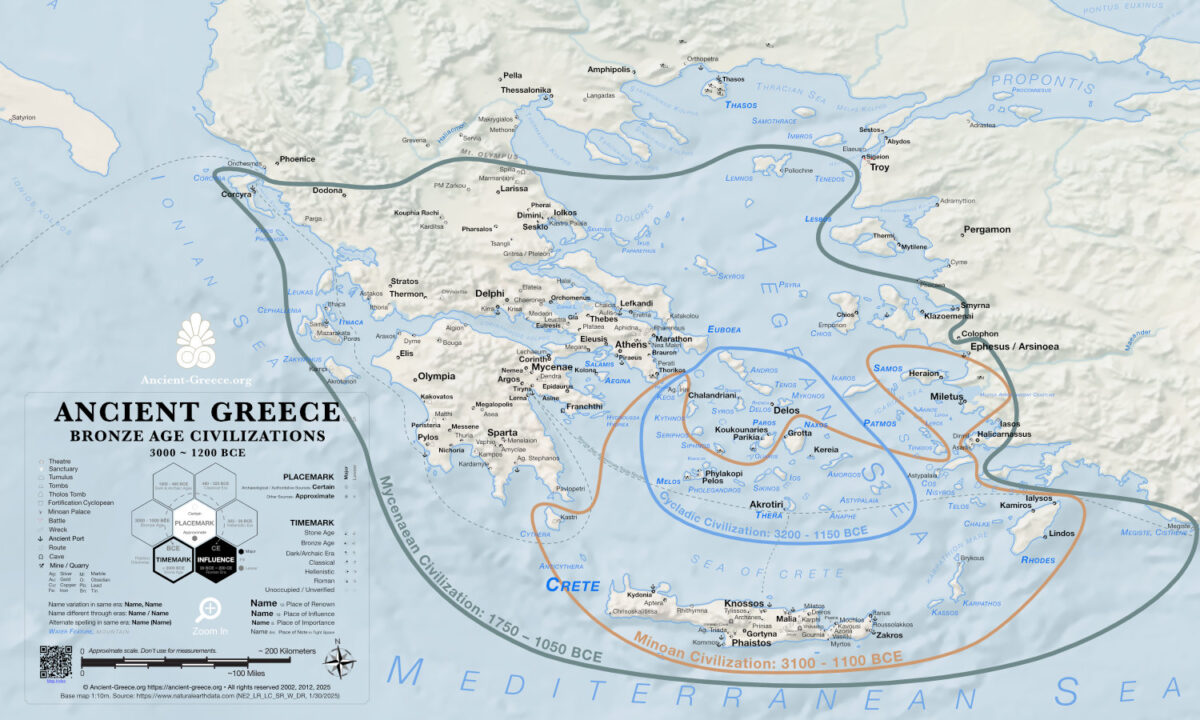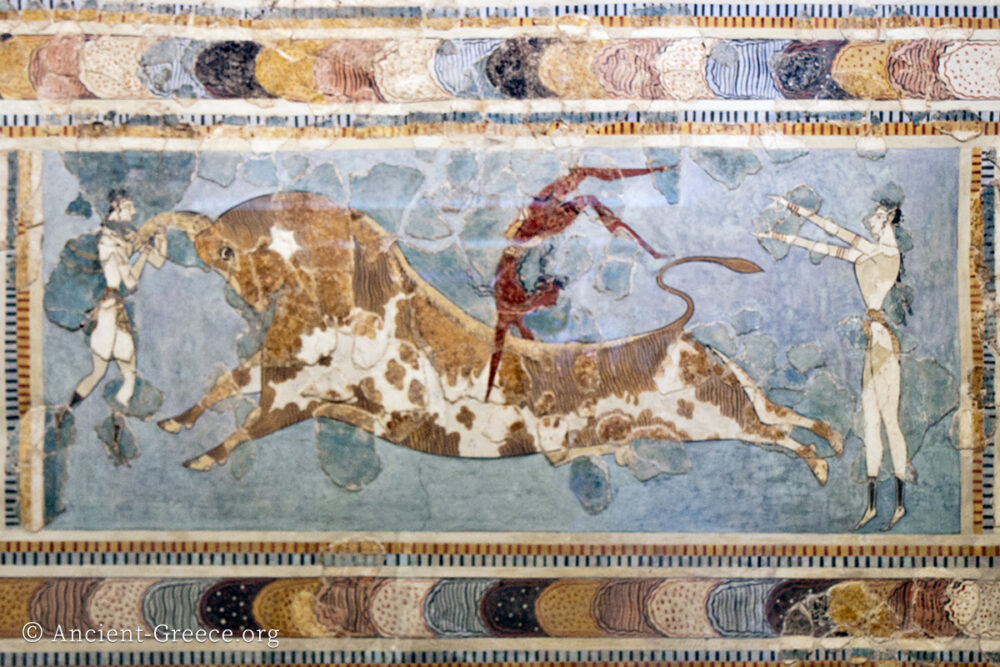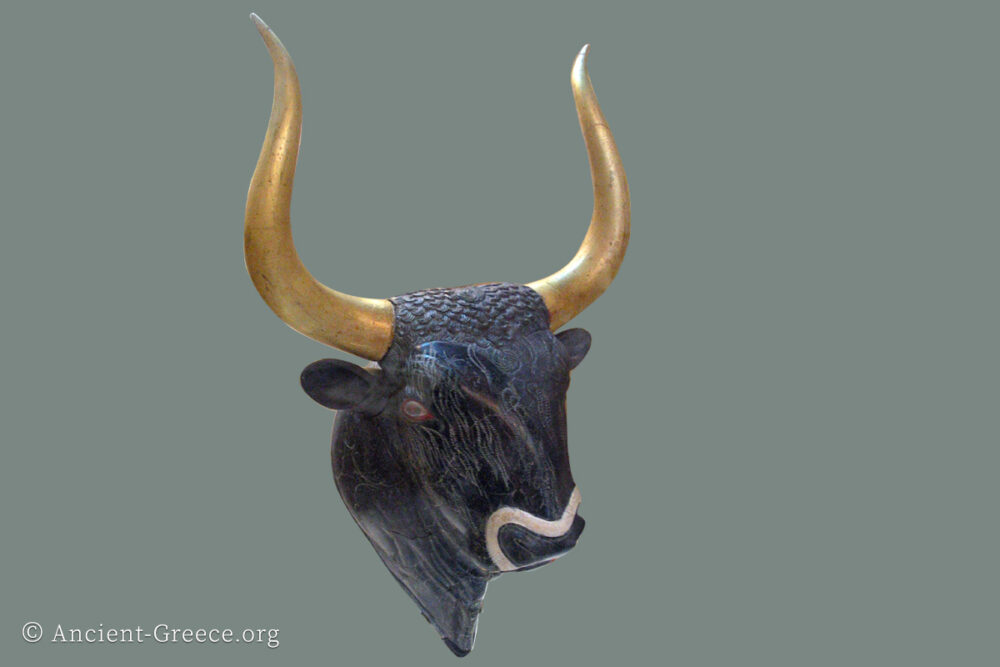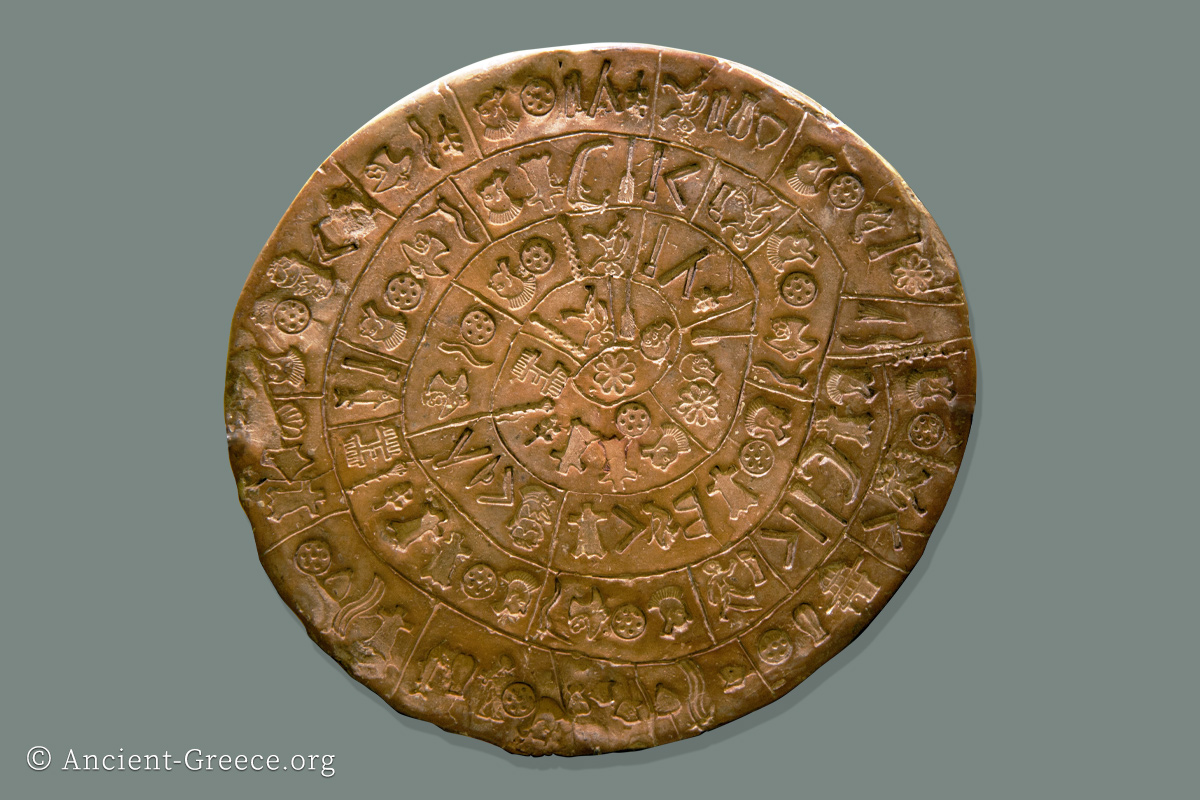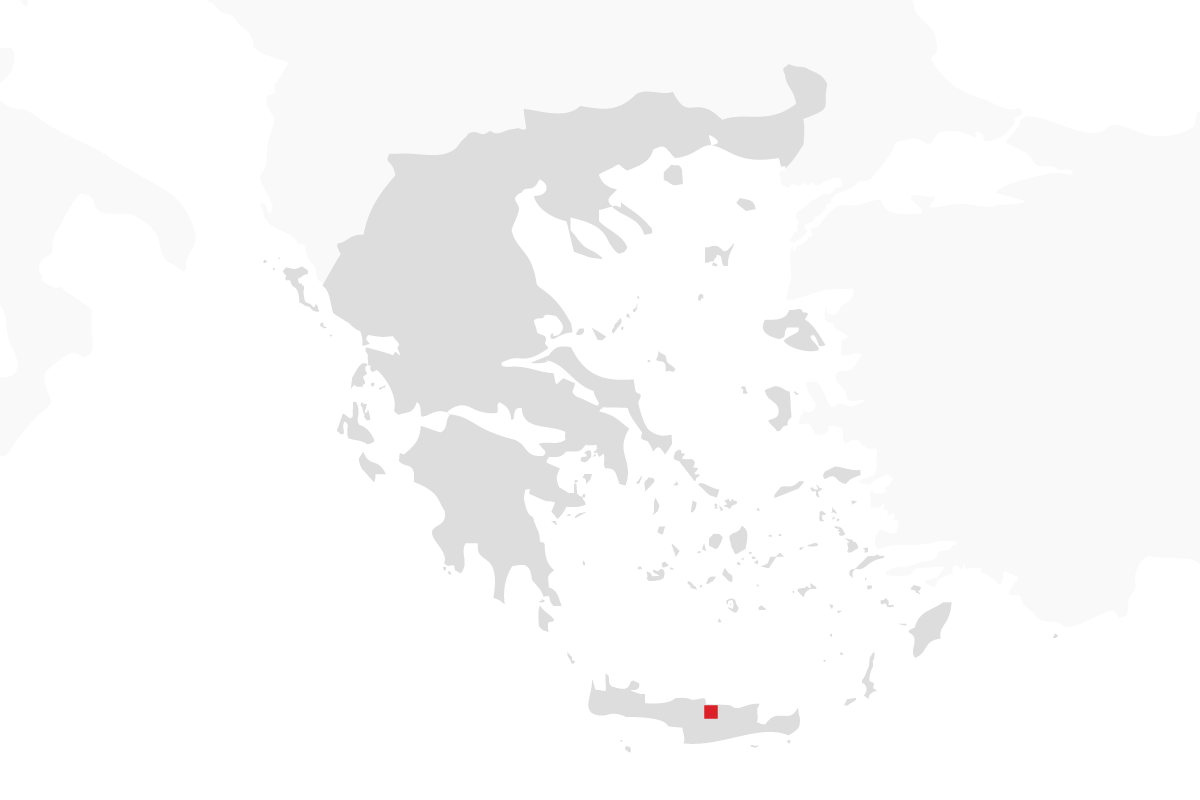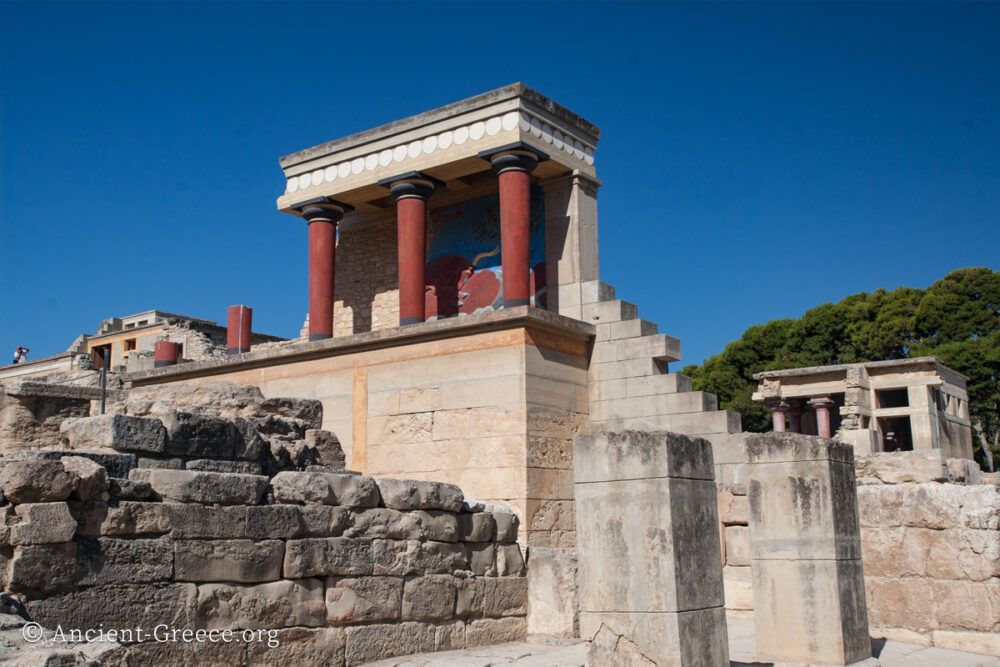
On this page:
Knossos (Κνωσσός, also transliterated as Cnossos, Knossus, Cnossus, Gnossus, Gnossos) palace was undeniably the most important center of Minoan Crete. It is grander, more complex, and more flamboyant than any of the other palaces known to us, and it is located about twenty minutes south of the modern port town of Heraklion.
Brief History
Knossos was inhabited for several thousand years, beginning with a neolithic settlement sometime in the seventh millennium BC, and was abandoned after its destruction in 1375 BC which marked the end of Minoan civilization.
The first palace on the low hill beside the Krairatos river was built around 1900 BC on the ruins of previous settlements. It was destroyed for the first time along with the other Protopalatial palaces of Crete in 1700 BC, probably by a large earthquake or foreign invaders. It was immediately rebuilt to an even more elaborate complex and until its abandonment it was damaged several times during earthquakes, invasions. In 1450 BC Knossos palace was damaged after the colossal volcanic eruption of Thera, and the subsequent invasion of Mycenaeans who made Knossos their capital as they ruled the island of Crete until 1375 BCE.
The palace of Knossos was the center of administration of the entire island of Crete during Minoan times, and its position as such allowed for unprecedented growth and prosperity as witnessed by the plethora of storage magazines, workshops, and wall paintings. The Throne room with its gypsum throne and benches to accommodate sixteen persons, the central courtyard, the theater, and the royal chambers, paint a portrait of Knossos as a forum of elaborate rituals and extraordinary historical occurrences.
Excavations and Restorations
Arthur Evans, the British Archaeologist who excavated the site in 1900 AD restored large parts of the palace in a way that it is possible today to appreciate the grandeur and complexity of a structure that evolved over several centuries and grew to occupy about 20,000 square meters. Walking through its complex multi-storied buildings one can comprehend why the palace of Knossos was associated with the mythological labyrinth.
The restorations performed by Evans have been criticized as inaccurate, and there is a feeling that many of the details were reconstituted (to use Evans’ term) utilizing at best “educated guesses”. For the visitor however, the restorations render the incomprehensible strata of ruins along with their past grandeur a bit more obvious, and bring the majesty of Minoan life at the palace a little closer.
For the visitor today, the area around the ramp which leads to the main palace, immediately exposes the rich strata of ruins that span millennia. To the left of the entrance ramp three large kouloures in the shape of large round pits reveal in their deep bottom the remains of Prepalatial building ruins.
Knossos in Mythology
According to Greek mythology, the palace was designed by famed architect Dedalos with such complexity that no one placed in it could ever find its exit. King Minos who commissioned the palace then kept the architect prisoner to ensure that he would not reveal the palace plan to anyone. Dedalos, who was a great inventor, built two sets of wings so he and his son Ikaros could fly off the island, and so they did. On their way out, Dedalos warned his son not to fly too close to the sun because the wax that held the wings together would melt. In a tragic turn of events, during their escape Ikaros, young and impulsive as he was, flew higher and higher until the sun rays dismantled his wings and the young boy fell to his death in the Aegean sea.
The Labyrinth, was the dwelling of the Minotaur in Greek mythology, and many associate the palace of Knossos with the legend of Theseus killing the Minotaur.
Knossos Archaeological Site Photos
The aforementioned myth associated with the palace about Theseus and the Minotaur is rich in suspense, but walking around the ruins of Knossos today it is hard to imagine it to be a place of torment and death. Instead, the palace radiates with joyous exuberance through the elaborate architectural planes and volumes that were clustered around the central courtyard. The elegant wall frescoes which decorated the walls speak of a people who approached the subtleties of life and the splendor of nature with a joyous disposition.
Included in the photographs: Prepalatial ruins, The grand staircase to the royal chambers, storage magazine, and the throne room.
Knossos Artifacts at the Heraklion Museum
Top row, left to right:
- Bull Games (Taurokatharpsia). From a room at the East wing of Knossos palace.
- Dolphin fresco from Knossos palace. Minoan, 1600-1450 BCE.
- Partridge frieze Fresco detail. Found at Knossos palace. 1600-1450 BCE.
Bottom row:
- Bull’s Head found at the temple repository.
- Lion’s-head rhyton. Limestone. From the palace of Knossos. Minoan Neopalatial period,
1600 – 1450 BCE. - Snake Goddess statuette. Neopalatial Period, 29 cm high (11 5/8″). 1650-1550 BCE.
- Linear B script clay tablets from Knossos. 14-13 c. BCE.
More Knossos artifacts at the Heraklion Archaeological Museum…

































